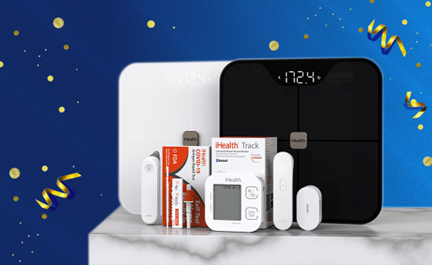A Focus on Fiber
There are two types of fiber we can get from food: soluble and insoluble fibers. Each type provides different benefits. If you have a well-balanced and healthy diet, you will generally get around 75% more insoluble fiber than soluble fiber. Although neither type is absorbed by the body, they have different properties when mixed with liquids, hence the designation between the two. They have some of the same beneficial physiological effects and similar sources, so you may hear less about the two being distinctly different.

Soluble fiber is "soluble" in water. When mixed with water it forms a gel-like substance and swells. Soluble fiber has many benefits, including moderating blood glucose levels and lowering cholesterol. The scientific names for soluble fibers include pectins, gums, mucilages, and some hemicelluloses.
Good sources of soluble fiber include oats and oatmeal, legumes (peas, beans, lentils), barley, fruits and vegetables (especially oranges, apples and carrots).
Insoluble fiber does not absorb or dissolve in water. It passes through our digestive system in close to its original form. Insoluble fiber offers many benefits to intestinal health, including a reduction in the risk and occurrence of hemorrhoids and constipation. The scientific names for insoluble fibers include cellulose, lignins, and also some other hemicelluloses. Most of insoluble fibers come from the bran layers of cereal grains, but also in unbreakable fibers from some fruits and vegetables, like in celery or skins of tomato.
Since dietary fiber is found only in plant products (i.e., nuts, whole grains, legumes, fruits and vegetables), these are essential to a healthy diet. The recommendation is to get between 20 and 35 grams fiber per day. In recent studies, the average American is estimated to consume only around 12 - 17 grams per day, or only about half of what they actually need.
Soluble fiber
beans, peas, lentils, oatmeal, oat bran, nuts, seeds, psyllium, apples, pears, strawberries, and blueberries
- Traps sugar, fat and cholesterol, and slows their absorption into the bloodstream
- Helps the body absorb more nutrients from food
- Reduces blood cholesterol levels
- Improves glucose control for diabetics, reduces risk of developing diabetes
Insoluble fiber
whole grains, barley, whole-grain couscous, brown rice, bulgur, wheat bran, nuts, seeds, carrots, cucumbers, zucchini, celery, green beans, dark leafy vegetables, raisins, nuts, grapes, and tomatoes
- May help with weight loss
- Reduces constipation
- Increases healthy bacteria in the gut to help digestion
- Reduces risk of bowel cancers
- May improve immune function

Meal Plan Packed With Fiber
This sample menu for a day gives you 37 or more grams of fiber:
Breakfast: 1 high fiber wheat toast (5g fiber), 2 tbsp natural peanut butter (2 g fiber) 1 cup sliced strawberries (4 g fiber)
- Mid-Morning Snack: 24 almonds (3.3 grams of fiber) and ¼ cup raisins (2 grams of fiber)
Lunch: Turkey sandwich made with 2 slices of whole wheat bread, lettuce, and tomato (8 grams of fiber), and an orange (3.1 grams of fiber)
- Afternoon Snack: Yogurt with half a cup of blueberries (2 grams of fiber)
Dinner: Grilled fish with a salad of romaine lettuce and shredded carrots (2.6 grams of fiber), half a cup of spinach (2.1 grams of fiber), and half a cup of lentils (7.5 grams of fiber)
- Evening Snack: 1 cups plain popped popcorn (3.5 grams of fiber)
This feature is coming soon
-
March 04, 2024
-
October 10, 2023
-
October 04, 2023
This feature is coming soon
You May Also Like
Title placeholder
posted_date placeholder
Title placeholder
posted_date placeholder
Title placeholder
posted_date placeholder
Title placeholder
posted_date placeholder
Title placeholder
posted_date placeholder
Title placeholder
posted_date placeholder
Title placeholder
posted_date placeholder
Title placeholder
posted_date placeholder
Title placeholder
posted_date placeholder
Title placeholder
posted_date placeholder
Title placeholder
posted_date placeholder
Title placeholder
posted_date placeholder
Title placeholder
posted_date placeholder
Title placeholder
posted_date placeholder
Title placeholder
posted_date placeholder



